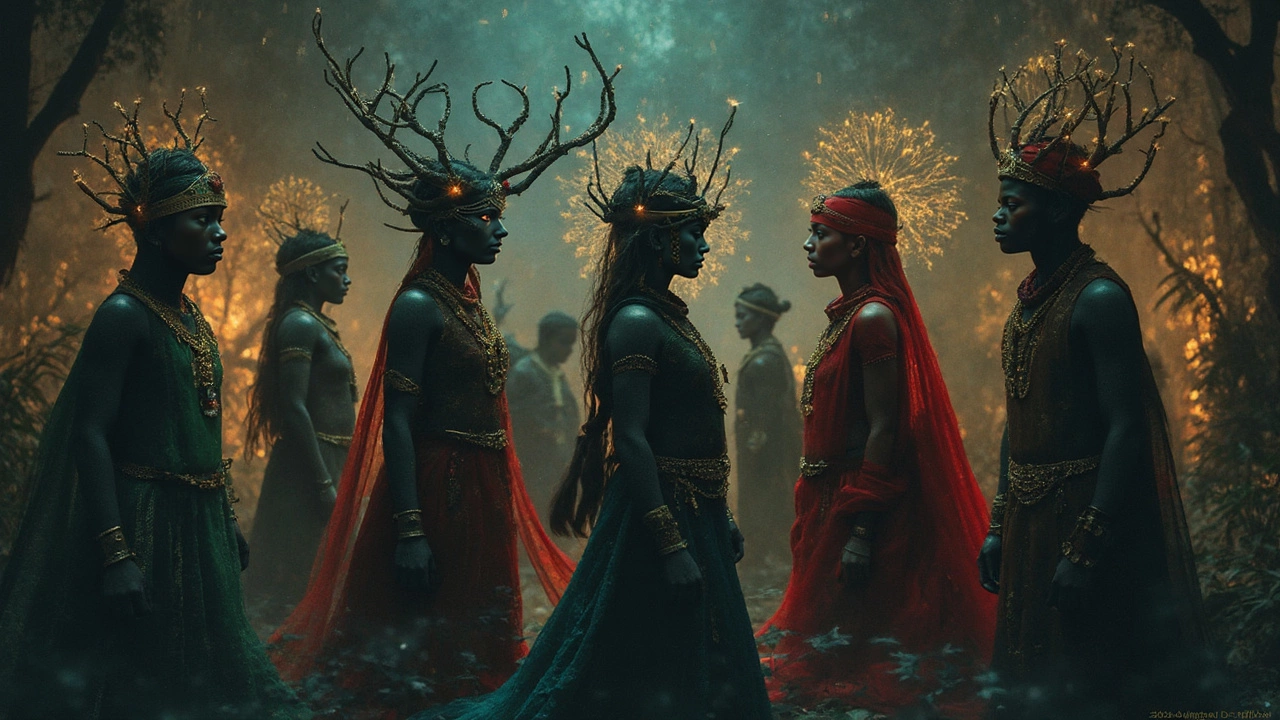Demons in Tamil Culture: Myths, Rituals, and Folk Beliefs
When people talk about demons, supernatural beings in Tamil folklore that embody chaos, disease, or moral imbalance. Also known as asuras, they are not just monsters—they are forces that test human devotion, warn against arrogance, and demand ritual respect. In Tamil Nadu, these beings aren’t locked in fairy tales. They live in temple sculptures, village songs, and the quiet moments before dawn when families light oil lamps to keep them at bay.
These demons, often tied to specific sins or neglected rituals. Also known as bhutas, they appear in stories as punishers of greed, pride, or broken vows. Take Kali, a fierce goddess who sometimes takes on demon-like forms to destroy evil. Also known as Kaliyugam, she represents the raw power needed to restore order. Her presence in Tamil temples isn’t just art—it’s a reminder that darkness must be acknowledged, not ignored. Then there’s Pisacha, a spirit that haunts lonely places and feeds on fear. Also known as bhoota, it’s why many Tamil families avoid walking alone at night near cemeteries or old wells. These aren’t random fears. They’re cultural tools passed down to teach caution, humility, and ritual discipline.
Demons in Tamil culture don’t just scare—they serve. They’re part of karakattam, a traditional dance where performers balance pots on their heads while invoking protective spirits. Also known as folk possession rituals, this dance isn’t entertainment—it’s a plea for safety from unseen forces. In rural areas, you’ll still hear elders recite verses to ward off Kaval Deivam, the guardian spirits who chase away malevolent entities. Also known as village protectors, these beings are honored with small offerings at crossroads and temple gates. Even today, families in villages light lamps, tie red threads, or hang neem leaves near doorways—not because they believe in ghosts, but because these acts connect them to generations who faced the same unknowns.
The stories you’ll find here don’t just describe demons—they show how Tamil people interact with them. From temple rituals that appease wrathful spirits to folk songs that mock their weaknesses, these traditions turn fear into resilience. You’ll read about how Diwali is celebrated differently in Tamil Nadu, where lighting lamps isn’t just about joy—it’s a shield against the dark. You’ll see how Karthigai Deepam’s flames are meant to outshine even the most persistent shadows. And you’ll learn why some rituals involve chanting names of demons themselves—to name them is to control them.
There’s no magic here, no fantasy. Just real people, real beliefs, and real practices shaped over centuries. What you’ll find below are articles that dig into these traditions—how they started, how they’re kept alive, and why they still matter today. Whether it’s a forgotten folk tale, a temple carving, or a grandmother’s bedtime warning, each piece reveals how demons aren’t just part of Tamil culture—they’re woven into its soul.
